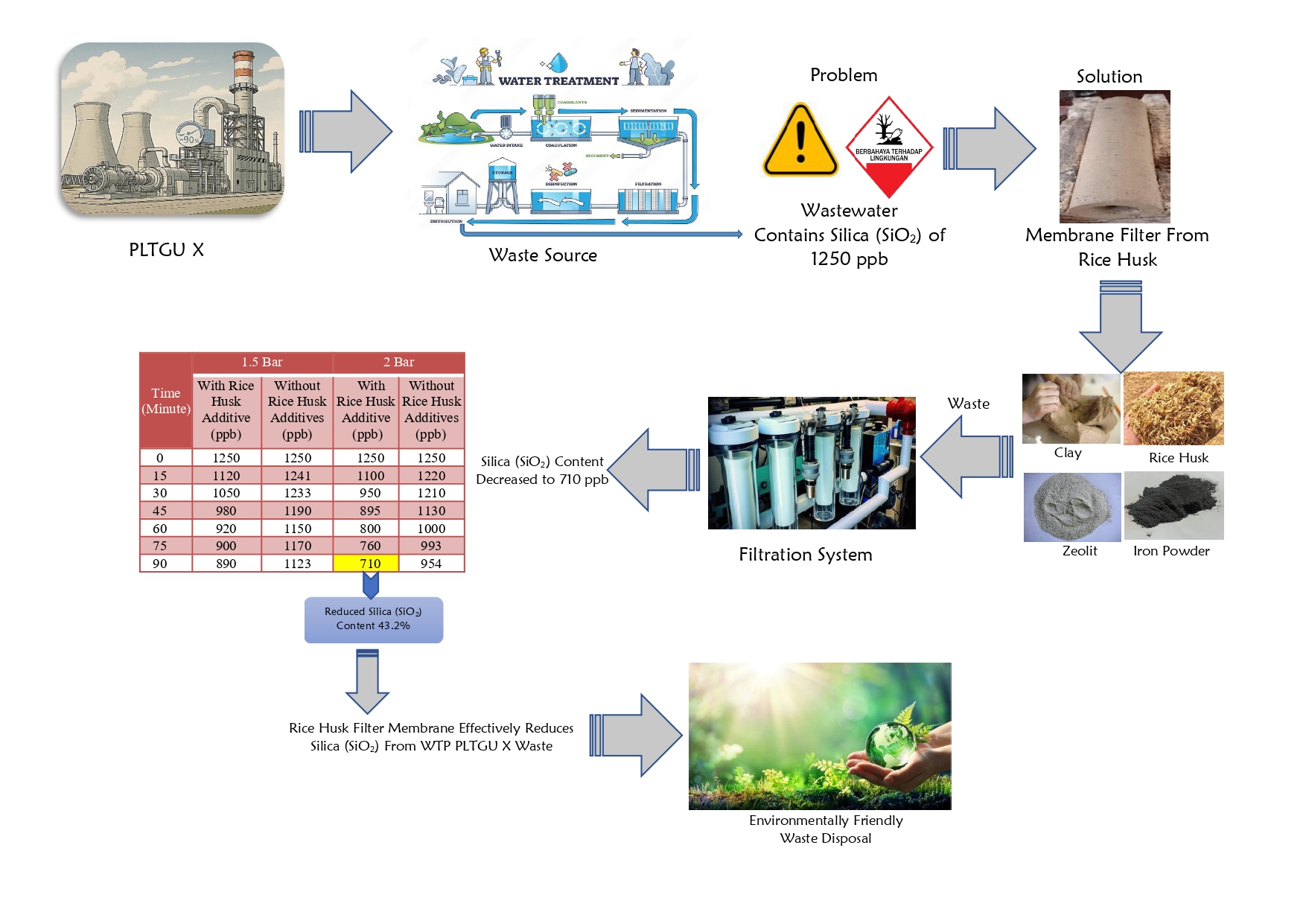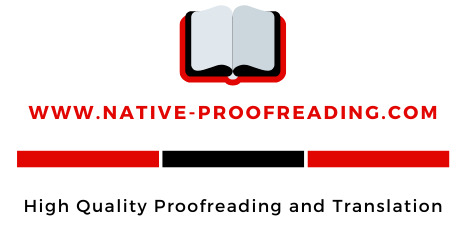Extraction of Basil Leaves Essential Oil using Microwave Assisted Hydrodistillation Method: Physical Characterization and Antibacterial Activity

Downloads
Basil oil can be obtained from basil leaves by non-extraction methods, namely Microwave Assisted Hydrodistillation (MAHD). Therefore, this research aims to determine the yield percentage, essential oil composition by GC-MS, physical characteristics, and antibacterial activity of basil essential oil. The highest yield of 0.3076% was obtained at the optimum condition, which included a microwave power of 300 W, a mass-to-volume solvent ratio (F/S) of 0.75 g/mL, a raw material size of ± 1.75 cm, and an extraction time of 90 min. The results of the analysis of variance showed that all process parameters used had a significant effect on the yield obtained. Basil oil exhibited a larger inhibition zone against Escherichia coli bacteria (16.38 mm) which tended to be stronger than Staphylococcus aureus (5.95 mm) and was classified as moderate. The main components contained in the basil oil were E-Citral (46.79%) and Z-Citral (38.17%). The physical characteristic test showed that the basil oil was soluble in 96% ethanol after a ratio of 1:9, with 1 ml of basil oil compared to 9 ml of ethanol. The density of basil oil at 0.961 g/mL also complied with the standard value according to the Essential Oil Association (EOA) of Ocimum basilicum Essential Oil. These results showed revealed that the parameter analyzed using oil yields at operating conditions produced the most optimum yield value.
Downloads
Anh, T. T., Duyen, L. T., Hang, L. M., Lam, T. D., Bach, L. G., Nguyen, D. C., & Toan, T. Q. (2019). Effect of drying temperature and storage time on Ocimum gratissimum Linn. leaf essential oil from Central Highlands, Vietnam. Materials Today: Proceedings, 18, 4648-4658. DOI: 10.1016/j.matpr.2019.07.449
Anwar, A.K., Yuharmen., Zamri, A. (2017). Isolasi Minyak Atsiri Daun Kemangi (Ocimum Sanctum L) Cara Konvensional dan Microwave Serta Uji Aktivitas Antibakteri dan Antioksidan. Repository UNRI, 4(1), 1-12. [,Sources]
Brooke, R., Fan, L., Khayet, M., & Wang, X. (2022). Heliyon A complementary approach of response surface methodology and an arti fi cial neural network for the optimization and prediction of low salinity reverse osmosis performance. Heliyon, 8(September), e10692. DOI: 10.1016/j.heliyon.2022.e10692
Clarizka, C., Fulanah, D., Zullaikah, S., & Rachimoellah. (2015). Ekstraksi Minyak Daun Kemangi dengan Menggunakan Air Subkritik Untuk Pembuatan Hand sanitizer Cynthia. Industrial Teknologi, 1(1), 1-5.
Da Cruz Almeida, E. T., da Silva, M. C. D., Oliveira, J. M. dos S., Kamiya, R. U., Arruda, R. E. dos S., Vieira, D. A., … do Nascimento, T. G. (2017). Chemical and microbiological characterization of tinctures and microcapsules loaded with Brazilian red propolis extract. Journal of Pharmaceutical Analysis, 7(5), 280-287. DOI: 10.1016/j.jpha.2017.03.004
Erliyanti, N. K., Saputro, E. A., Yogaswara, R. R., & Rosyidah, E. (2020). Aplikasi Metode Microwave Hydrodistillation pada Ekstraksi Minyak Atsiri dari Bunga Kamboja (Plumeria alba). Jurnal IPTEK, 24(1), 37-44. DOI: 10.31284/j.iptek.2020.v24i1.865
Filly, A., Fabiano-Tixier, A. S., Louis, C., Fernandez, X., & Chemat, F. (2016). Water as a green solvent combined with different techniques for extraction of essential oil from lavender flowers. Comptes Rendus Chimie, 19(6), 707-717. DOI: 10.1016/j.crci.2016.01.018
Hammad, E. A., & El-Sagheer, A. M. (2022). Comparative efficacy of essential oil nanoemulsions and bioproducts as alternative strategies against root-knot nematode, and its impact on the growth and yield of Capsicum annuum L. Journal of the Saudi Society of Agricultural Sciences, (xxxx). DOI: 10.1016/j.jssas.2022.06.002
Hashim, R., Husin, S. A., Ahmad, N., Bahari, N., Abu, N., Ali, R. M., Paul, S. C. (2022). Tricycle Project - One Health approach: Whole genome sequencing(WGS) of Extended-spectrum beta-lactamase (ESBL) producing Eschericia (E.) coli derived from human, food chain and environment. International Journal of Infectious Diseases, 116, S105-S106. DOI: 10.1016/j.ijid.2021.12.249
Hawa, L. C., Dewi, S. R., Izza, N., & Wigati, L. P. (2016). Analisa Karakteristik Fisik Chips Umbi Talas (Colocasia Esculenta L.) Berbasis Machine Vision (Studi Pengeringan Dengan Tray Dryer). J.Rekapan, 10(1), 22-28.
Juul, L., Steinhagen, S., Bruhn, A., Jensen, S. K., Undeland, I., & Dalsgaard, T. K. (2022). Combining pressing and alkaline extraction to increase protein yield from Ulva fenestrata biomass. Food and Bioproducts Processing, 134, 80-85. DOI: 10.1016/j.fbp.2022.05.006
Kusuma, H. S., Ansori, A., & Mahfud, M. (2021). Optimization of Synthesis of Methyl Acetate From Acetic Acid and Methanol Using Microwave-Assisted Esterification. Journal of Chemical Technology and Metallurgy, 56(4), 686-697.
Lacalle-Bergeron, L., Goterris-Cerisuelo, R., Portolés, T., Beltran, J., Sancho, J. V., Navarro-Moreno, C., & Martinez-Garcia, F. (2021). Novel sampling strategy for alive animal volatolome extraction combined with GC-MS based untargeted metabolomics: Identifying mouse pup pheromones. Talanta, 235. DOI: 10.1016/j.talanta.2021.122786
Lindriati, T., Herlina, H., Arbiantara, H., & Asrofi, M. (2020). Optimization of meat analog production from concentrated soy protein and yam (Xanthosoma sagittifolium) powder using pasta machine. Food Research, 4(3), 887-895. DOI: 10.26656/fr.2017.4(3).357
Lopez-Avila, V., & Luque de Castro, M. D. (2014). Microwave-Assisted Extraction. Reference Module in Chemistry, Molecular Sciences and Chemical Engineering. Elsevier Inc. DOI: 10.1016/b978-0-12-409547-2.11172-2
Ma, Y., Ye, K., Liu, P., Yuan, A., Chen, S., & He, Y. (2023). Effect of a Konjac glucomannan/chitosan antibacterial composite membrane microencapsulated with oregano essential oil on the quality of chilled pork. Applied Food Research, 3(1). DOI: 10.1016/j.afres.2022.100249
Malik, A. R., Sharif, S., Shaheen, F., Khalid, M., Iqbal, Y., Faisal, A., Botmart, T. (2022). Green synthesis of RGO-ZnO mediated Ocimum basilicum leaves extract nanocomposite for antioxidant, antibacterial, antidiabetic and photocatalytic activity. Journal of Saudi Chemical Society, 26(2), 101438. DOI: 10.1016/j.jscs.2022.101438
Mahmoudi, H., Marzouki, M., M'Rabet, Y., Mezni, M., Ait Ouazzou, A., & Hosni, K. (2020). Enzyme pretreatment improves the recovery of bioactive phytochemicals from sweet basil (Ocimum basilicum L.) leaves and their hydrodistilled residue by-products, and potentiates their biological activities. Arabian Journal of Chemistry, 13(8), 6451-6460. DOI: 10.1016/j.arabjc.2020.06.003
Nazir, S., Wani, I. A., & Masoodi, F. A. (2017). Extraction optimization of mucilage from Basil (Ocimum basilicum L.) seeds using response surface methodology. Journal of Advanced Research, 8(3), 235-244. DOI: 10.1016/j.jare.2017.01.003
Pratiwi, A., & Utami, L. B. (2018). Isolasi dan Analisis Kandungan Minyak Atsiri Pada Kembang Leson. Bioeksperimen: Jurnal Penelitian Biologi, 4(1), 42-47. DOI: 10.23917/bioeksperimen.v4i1.5930
Putri, I. A., Fatimura, M., Husnah, & Bakrie, M. (2021). Pembuatan Minyak Atsiri Kemangi ( Ocimum Basilicum L .) dengan Menggunakan Metode Distilasi Uap Langsung. Jurnal Redoks, 6(2), 149-156
Putri, D. K. Y & Rahmawati, A., (2020). Microwave Assisted-Extraction of Essential Oil From Fresh Basil (Ocimum Basilicum L.) Leaves. Journal of Biobased Chemicals, 1(1), 1-11. DOI: 10.19184/jobc.v1i1.105
Qodri, U. (2020). Analisis kuantitatif minyak atsiri dari serai (Cymbopogon sp) sebagai aromaterapi. Jurnal Farmasi Tinctura, 1(2), 64-70
Rohana, I. (2019). Isolasi Dan Identifikasi Bakteri Endofit Dari Rimpang Temulawak (Curcuma xanthorhizza) Sebagai Penghasil Senyawa Antibakteri Terhadap Bakteri Pseudomonas aeruginosa dan Staphyllococcus epidermidis. Journal of Chemical Information and Modeling, 53(9), 1689-1699.
Sarabia, L. A., & Ortiz, M. C. (2009). Response Surface Methodology. Comprehensive Chemometrics, 1(October 2004), 345-390. DOI: 10.1016/B978-044452701-1.00083-1
Sharifvaghefi, S., & Zheng, Y. (2022). Microwave vs conventional heating in hydrogen production via catalytic dry reforming of methane. Resources Chemicals and Materials, 1(3-4), 290-307. DOI: 10.1016/j.recm.2022.08.003
Silawati, S,O. (2018). Aktivitas Antibakteri Minyak Atsiri Daun Sirih Merah (Piper crocatum Ruiz dan Pav) Terhadap Staphylococcus aureus dan Escherichia coli secara In Vitro. Skripsi: Universitas Muhammadiyah Surakarta.
Suganya, P., Jeyaprakash, K., Mallavarapu, G. R., & Murugan, R. (2015). Comparison of the chemical composition, tyrosinase inhibitory and anti-inflammatory activities of the essential oils of Pogostemon plectranthoides from India. Industrial Crops and Products, 69, 300-307. DOI: 10.1016/j.indcrop.2015.02.045
Villar Blanco, L., González Sas, O., Sánchez, P. B.,Domínguez Santiago, Á., & González de Prado, B. (2022). Congo red recovery from water using green extraction solvents. Water Resources and Industry, 27 December 2021. DOI: 10.1016/j.wri.2021.100170
Yuliana, D. A., Nurhidayati, S., Aswan, A., & Febriana, I. (2020). Proses Pengambilan Minyak Atsiri dari Tanaman Nilam (Progestemon cablin benth) menggunakan Metode Microwave Hydrodistillation. Jurnal Kinetika, 11(03), 34-39.
Copyright (c) 2023 CHEESA: Chemical Engineering Research Articles

This work is licensed under a Creative Commons Attribution-NonCommercial-ShareAlike 4.0 International License.
With the receipt of the article by CHEESA Editorial Board and the decision to be published, the copyright regarding the article will be transferred to CHEESA Journal.
CHEESA has the right to multiply and distribute the article and every author is not allowed to publish the same article that was published in this journal.

This work is licensed under a Creative Commons Attribution-NonCommercial-ShareAlike 4.0 International License.
Under the following terms:
Attribution ” You must give appropriate credit, provide a link to the license, and indicate if changes were made. You may do so in any reasonable manner, but not in any way that suggests the licensor endorses you or your use.
NonCommercial ” You may not use the material for commercial purposes.
ShareAlike ” If you remix, transform, or build upon the material, you must distribute your contributions under the same license as the original.







